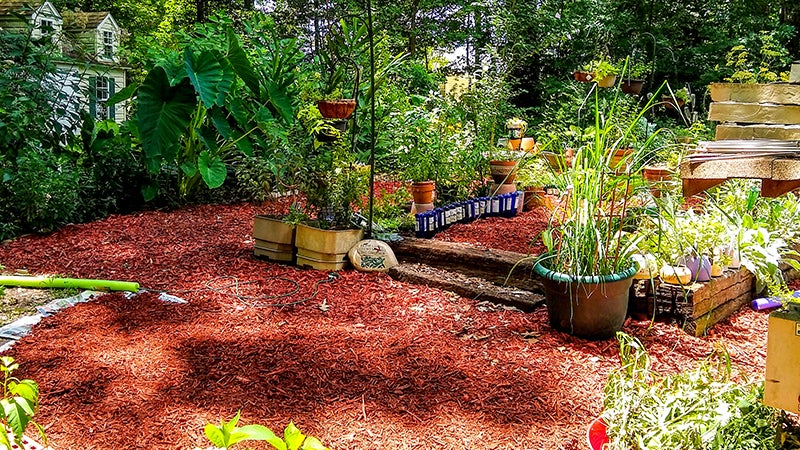Master Gardener gives green-thumb tips
Published 10:15 pm Thursday, July 11, 2019

- Suffolk Master Gardener Coordinator Wanda Gerard’s garden in Suffolk. (submitted photo)
Attendees learned useful gardening tips in an informal discussion Wednesday with Suffolk Master Gardener Coordinator Wanda Gerard at the Phillips-Dawson House.
Gerard was the speaker for the latest session of the “Afternoon Conversations” series. This partnership between Suffolk Public Library and the Suffolk-Nansemond Historical Society allows for discussions on local topics of interest, ranging from regional history to essential planting advice.
Local gardeners listened to advice on summer maintenance and great plants for local gardens, while they asked Gerard questions in return, like how to get rid of troublesome moles.
“I thought it was very good,” said Suffolk resident Libby Holdstein, who left the Wednesday session with pages of notes. “I’m going to go home and Google some of these plants I’ve never heard of (before).”
Gerard listed off numerous plants that are good additions for local gardens.
One of those was the butterfly bush, which is described in the Old Farmer’s Almanac as a beautiful, fast-growing, deciduous shrub with blossoms that bloom from summer to autumn, according to almanac.com.
“This is a shrub that can do well in full sun or light shade,” Gerard wrote in an email Thursday. “The butterflies will thank you for planting it.”
Gerard also recommended serviceberry bushes, also known as Juneberry or shadbush. This shadbush is a “multi-season” kind of plant, Gerard said, with pretty flowers in the spring and leaves that turn red in the fall. They’re great for bees and produce berries that feed birds, as well.
It’s “another full sun or partial shade shrub that you can’t go wrong with,” Gerard wrote.
She also discussed certain plants that typically die back this time of year — characterized by the gradual death of twigs, branches, shoots or roots. She used the bleeding heart flower as an example for her presentation.
“That’s one plant that sort of disappears on you, but it will come back next spring,” she said.
That’s why important for gardeners to take pictures for reference. Pictures of these gardens in full bloom will help gardeners keep track of what you planted and where.
Chemical use in the garden also requires careful consideration. Gerard advised gardeners to apply chemicals several hours before watering the plants, the best time for which is in the morning or evening, not in midday heat.
Another mistake that gardeners and homeowners often make, she said, is overfertilizing. She said homeowners will frequently use slightly more fertilizer than recommended. It may not seem like much, but more than necessary can do more harm than good.
She advised to follow the instructions on the fertilizer package to accomplish the task, and to understand that there might be different amounts needed for lawns than for flower gardens.
“Use the precise amounts stated,” she wrote. “Don’t think a little extra will help.”
As for one questioner’s mole troubles, Gerard explained the difference between moles and voles. While moles like meat, voles prefer vegetation and will go through mole-holes and damage gardens. But both animals are a nuisance.
“Planting your plants with permatil or burying the plant in a container in the ground are two recommended tactics at keeping the plant alive,” Gerard wrote.
Visit suffolkmastergardener.org for more information on the Suffolk Master Gardeners Association. The Suffolk Master Gardeners are also interviewing prospective students for their upcoming class. Those interested in the class can contact Wanda Gerard at vagardengurl.com for more information.
For more information on the “Afternoon Conversations” series of talks, visit suffolkpubliclibrary.com.






